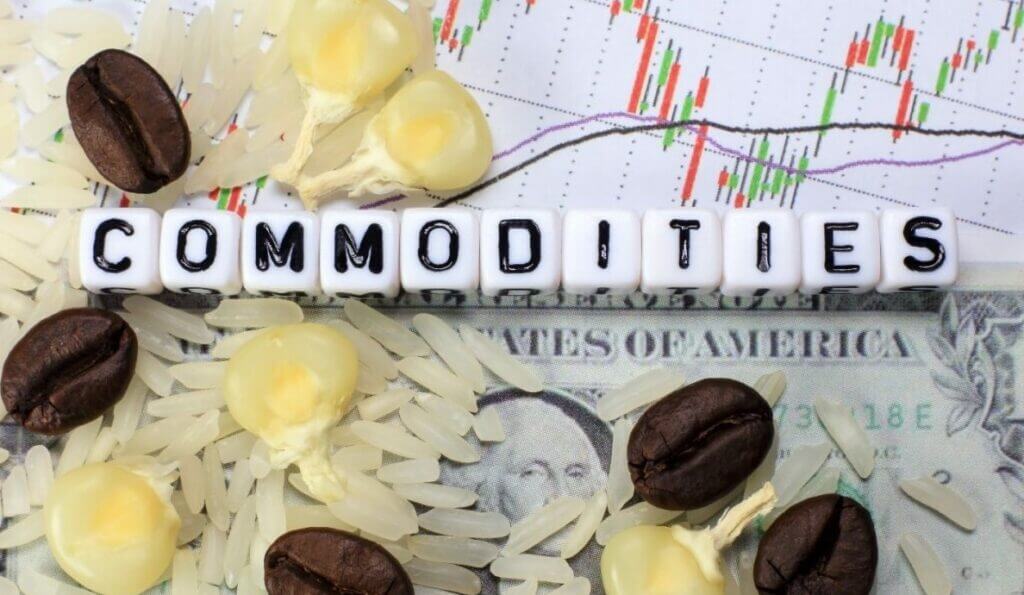
CFD Commodities: How it Works, and How to Trade Them?
Have you been thinking lately about what CFD commodities are and how to trade them best? What is the secret of these commodities, and why do numerous trades trade them?
Let’s get all the essential information about CFD commodities and CFD commodity futures from an experienced, experienced expert, shall we?
What does CFD mean exactly?
A Contract for Differences (CFD) is a pact between a buyer and a seller, mandating the buyer to cover the disparity between an asset’s current value and its worth at the time of agreement. Specifically in commodities CFD, traders can venture into commodities CFD trading without owning the actual commodities.
CFDs offer traders and investors the opportunity to capitalize on price fluctuations. The essence of a CFD, especially when using platforms like CFD commodities MetaTrader, lies in tracking the price change from the trade’s initiation to its conclusion rather than the asset’s intrinsic value.
This process is streamlined through a relationship between the client and the broker, eliminating the need to engage with traditional stock, forex, or futures markets. The unique advantages of CFD trading, particularly in commodities CFD, have notably bolstered its appeal recently.
Understanding Contracts for Differences (CFDs)

A Contract for Differences, often abbreviated as CFD, is a pact between a trader and a CFD broker. This pact stipulates that the parties will settle the difference in the value of a particular financial instrument from when the agreement is initiated to when it’s terminated.
This method is not for novices. Only seasoned traders typically delve into CFDs. Unlike traditional trading, CFDs don’t involve the exchange of the actual asset or security. Instead, traders deal in the price variations of these assets.
Think of it like this: A trader predicts price fluctuations rather than purchasing or offloading tangible gold.
At its core, CFDs offer a platform for traders to speculate on the future direction of asset prices, be it a rise or a fall. If a trader believes the asset’s price will escalate, they can acquire a CFD. They can dispose of their position if their prediction is accurate and the asset’s price soars.
The profit or loss is then computed by finding the difference between the initial cost and the final selling price. Any profits or losses are adjusted in the trader’s brokerage account.
Conversely, if a trader’s intuition tells them an asset’s price will descend, they can initiate a sell position. They’d need to execute a counterbalancing buy transaction to finalize this position. The net loss incurred is settled in cash through their brokerage account.
Guide to Trading Commodity CFDs and More
Contracts for Difference (CFDs), including commodity CFDs, are trading instruments that enable investors to speculate on price movements without owning the actual asset. These contracts are established between traders and financial institutions.
Understanding CFDs
CFDs permit you to buy or sell an asset’s position, predicting its price. This trading strategy relies on the difference between the opening and closing price. The primary allure of the CFD market is its flexibility. Whether it’s commodities trading, stocks, or currencies, a CFD trader can opt to go long (buy) if they anticipate a rise in price or short-sell if they expect a decline.
The actual trade involves two steps: opening the position at a buy price and closing it at either a profit or a loss. Contracts for Difference (CFDs) allow this without the physical handover of the asset.
Commodity Types

- Soft: Agricultural or livestock products, e.g., coffee, wheat.
- Hard: Mined items like oil and copper.
Price Influencers
1. Supply/Demand: Affects price dynamics.
2. Geopolitics: Wars and policies can disrupt prices.
3. Competition: E.g., renewables vs. oil.
4. Economic Health: Determines demand and price.
5. USD Fluctuations: Influence global commodity costs.
Why Commodity CFDs?
The commodity market has always been a cornerstone of global trade. With CFDs, traders can now speculate on commodities without owning them. This adds an extra layer to traditional commodities trading.
Pros of CFD Trading

- Leverage: CFDs, especially in the commodity market, offer high leverage. This means CFD traders can trade larger positions with a smaller capital. However, it’s crucial to note that while leverage is able to amplify profits, it can also magnify losses.
- Global Access: One trading platform can provide access to global markets 24/7.
- No Shorting Rules: Unlike some markets with regulations against shorting, CFDs allow traders to short-sell without limitation.
- Professional Execution Without Fees: Most CFD brokers only earn profits from the spread, the difference between the buy and sell price, not charging extra fees.
- No Day Trading Restrictions: The CFD market does not limit day trading, allowing more flexibility for traders.
- Diverse Trading Opportunities: Besides commodity CFDs, brokers offer many other assets, from stocks to currencies.
Cons of CFD Trading
- Spread Payments: The spread can impact profits, especially in markets where large price movements are infrequent.
- **Regulation Issues**: Some regions have lax oversight in the CFD sector, leading to heightened attention.
- **Potential Hazards**: Market fluctuations can be unpredictable. Employing a structured approach and tools like stop-loss orders is crucial to minimize losses.
- **CFDs in the U.S.** – CFD trading is prohibited by the U.S. Securities and Exchange Commission (SEC) because of issues related to substantial leverage and its over-the-counter trading nature. Hence, traders should familiarize themselves with regional margin regulations and other directives.
Safety of CFD Transactions?
Engaging in CFD transactions comes with inherent dangers. Even with protective mechanisms like stop-loss orders, market unpredictability, high leverage, and sudden price gaps can cause sizable losses. It’s imperative to be mindful of these potential challenges.
Bottom line
In the financial markets, the CFD sector, a type of financial derivative, grapples with challenges due to lax regulations in specific areas.
Given the inherent risks of commodity features and market volatility, tools like stop-loss orders become essential, but traders must also be well-informed about local margin requirements. Understanding these elements is crucial for anyone navigating this complex trading landscape.
FAQ

What are CFD commodities?
They allow traders to speculate on commodity price movements without owning the physical item, focusing on price differences.
How does CFD commodities trading differ from traditional commodities trading?**
Traditional trading involves physical commodity ownership; CFD trading is purely speculative.
Which platforms are commonly used for CFD commodities trading?
The CFD commodities MetaTrader is a popular choice.
Why do traders prefer CFD commodities trading over conventional trading?
It offers high leverage, global access, flexibility, and potential profits in both rising and falling markets.
Is CFD commodities trading allowed everywhere?
No, regulations vary. For example, the U.S. SEC prohibits CFD trading due to specific concerns.




